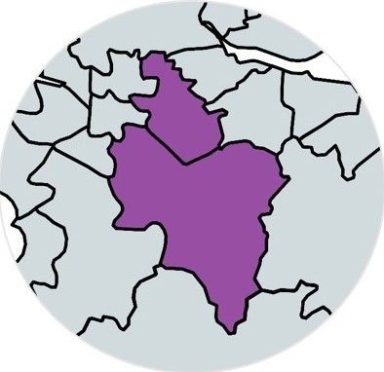Information on the use of oxygen
Oxygen cylinder for outside the home
Ambulatory oxygen is provided in the form of cylinders for walking outside the home. It is up to you whether you use ambulatory oxygen; some people prefer to slow down and stop and start in preference to wearing and carrying oxygen cylinders. However it is important to remain mobile and active as your muscles still need to be exercised otherwise they will lose strength and your exercise capacity will drop significantly if you do not continue moving around. You should not avoid doing things because you get breathless. If you find that you are then maybe oxygen might help you.
Sometimes ambulatory oxygen is needed to help perform activities of daily living such as washing and dressing and moving from room to room. For ambulatory oxygen inside the home, you would use your oxygen concentrator.
Your doctor may recommend that you use oxygen for an extended time during the day to help maintain the health and function of your organs including your heart. It is not being recommended to relieve breathlessness and it is important that you use oxygen as advised. You may also be given 2 different prescriptions of oxygen; one for resting, sitting and sleeping and one for ambulating or moving around.
There are a variety of oxygen delivery devices including nasal cannula and masks, all of which need to be assessed on you and you may have different oxygen prescriptions for each device. Always check with your respiratory team if you are unsure of how you should use your oxygen.
Most people diagnosed with ILD experience breathlessness.
This is usually first noticed during exercise and may be relieved by using oxygen. Not all breathlessness is relieved by oxygen, so it is important to be formally assessed for oxygen before using it.
You may be offered ambulatory oxygen if after an assessment it is found that your oxygen levels drop while you are performing activities such as: walking, going up the stairs, etc. Your doctor can perform a simple walking test to see whether ambulatory oxygen might help you.
Oxygen concentrator
This is a small machine that is delivered to your home. It is powered by electricity which takes in air and removes the other gases allowing only oxygen to be filtered out to the patient through either nasal cannula or a mask.
It is capable of running 24 hours a day 7 days per week and is regularly serviced by the oxygen contractor. You will also be given a large back-up cylinder for use only in an emergency in case there is an electrical power cut.
You will be reimbursed for the electricity used.
Oxygen cylinders
These are small lightweight cylinders for use outside the home. They may be fitted with an oxygen conserver that will deliver a pulse dose of oxygen only when you breathe in.
This allows the cylinder to last longer. Sometimes your oxygen assessment unit will recommend that you use the oxygen from a cylinder without a conserver if they feel you need continuous oxygen.
Liquid Oxygen
If you are using a lot of ambulatory oxygen at higher flow rates then your oxygen assessor may recommend that you use liquid oxygen. Liquid oxygen is usually delivered at regular intervals in the form of a large reservoir unit and a smaller domiciliary device that you fill yourself from the reservoir unit. Your oxygen supplier will show you how to use this.
Portable cylinder
You may be given several cylinders at a time for use outside the home and instructed to telephone the oxygen company once they are empty and you need replacement full cylinders. You will be supplied with a back pack to carry your oxygen in your back, but some oxygen companies will supply a trolley for transporting your oxygen cylinder.
Remember please be careful
All oxygen is flammable. Please do not smoke using oxygen and keep away from naked flames. Store your oxygen in a safe place.
You will also need to advise Scottish Fire and Rescue (01698 402700) and your home insurance provider that you keep oxygen in your home. There is no additional charge on your home insurance premium.
Filling up an ambulatory oxygen cylinder from a reservoir tank
There are special storage instructions associated with the storage and use of liquid oxygen which you will need to consider. If you have any concerns about using liquid oxygen; please contact your oxygen supplier. Liquid oxygen is useful in that the ambulatory cylinders can provide up to 15 litres/min. Obviously the higher the flow rate that you use the shorter time it will last, but generally speaking it will last longer than a cylinder of oxygen.
Ambulatory oxygen devices with liquid oxygen reservoir tank
You will need to store your reservoir tank on the ground floor or in a garage. You are given 1 or 2 ambulatory cylinders that you can fill yourself before you go out. They usually last longer than regular cylinders, although the oxygen will ‘leak’ from the ambulatory canisters if not used on each occasion.
It is important to fill the liquid oxygen canisters up just before you need them. You will be shown by the oxygen supplier how to ‘decant’ liquid oxygen from the reservoir tank into your ambulatory device.





